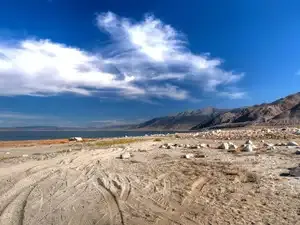From high-security military bases to isolated islands crawling with danger, the world is dotted with places that remain strictly off-limits to the public. These forbidden zones—hidden in plain sight or nestled in remote corners of the Earth—capture the imagination of many. The more inaccessible they are, the more they seem to attract stories of mystery, secrecy, and speculation.
Some are protected due to national security concerns, like secret testing grounds and intelligence outposts. Others are cordoned off to preserve fragile ecosystems, historical treasures, or even to safeguard human life from potential hazards—think venomous snakes, toxic gas, or deadly terrain. While researchers or officials may gain limited access under special circumstances, the average traveller is left to wonder: what really lies behind the barriers?
ALSO READ: Best European nation for summer travel revealed. And no, it's not France or Italy
From well-known sites like Area 51 in the US to lesser-known but equally intriguing locations across continents—including one in India—these spots remain sealed off from the world.
(Join our ETNRI WhatsApp channel for all the latest updates)Here is a list of 7 forbidden places in the world, as per a Travel and Leisure report
Area 51, USA
Established in 1955 and officially acknowledged only in 2013, Area 51 is a top-secret U.S. military base in Nevada, known for its extreme secrecy and restricted access. While believed to be a testing ground for experimental aircraft, conspiracy theories link it to alien research following an alleged UFO crash. A BBC report confirms the site’s Cold War role in testing spy planes like the U-2 and SR-71 Blackbird. Public entry is strictly prohibited.
Mausoleum Of Qin Shi Huang, China
Despite the discovery of thousands of terracotta warriors since 1974, the main tomb of China’s first emperor, Qin Shi Huang, remains untouched. Fearing irreversible damage, authorities have restricted excavation. Over 8,000 clay soldiers are believed to guard the site, yet only a fraction has been unearthed. Now a UNESCO World Heritage Site, this sealed mausoleum continues to intrigue historians and archaeologists with its untold secrets.
North Sentinel Island, India
Home to the indigenous Sentinelese population who fiercely defend their voluntary isolation, India’s North Sentinel Island is forbidden to protect the well-being of the island’s inhabitants. Protected under the Andaman and Nicobar Islands Protection of Aboriginal Tribes Act of 1956, the island is off-limits to the public for the benefit of both the visitors and the Sentinelese people. As the uncontacted inhabitants have never been exposed to the outer world, they lack immunity to common diseases and isolation is required.
Chichen Itza Pyramid, Mexico
El Castillo, the iconic pyramid at Mexico’s Chichen Itza, draws thousands of tourists but remains off-limits for climbing since a fatal fall in 2006. Also known as the Temple of Kukulcan, visitors can only view its ornate exteriors. Recognised as one of the New Seven Wonders of the World by UNESCO in 2007, the site blends ancient history with strict preservation.
Ilha Da Queimada Grande, Brazil
Snake Island in Brazil, home to around 4,000 venomous golden lancehead vipers, is one of the world’s most dangerous places. With some areas having one snake per square meter, its venom can cause rapid tissue death. Public access is banned, and only authorised researchers with medical supervision are allowed entry.
Svalbard Global Seed Vault, Norway
Nicknamed the ‘Doomsday Vault’, the Svalbard Global Seed Vault in Norway houses over 100 million seed varieties from around the world. Buried 320 feet inside a mountain on Spitsbergen island, it’s built to endure disasters, including global ice melt. Open only to seed depositors on select days, this highly secure facility preserves global crop diversity for future generations against threats like climate change.





